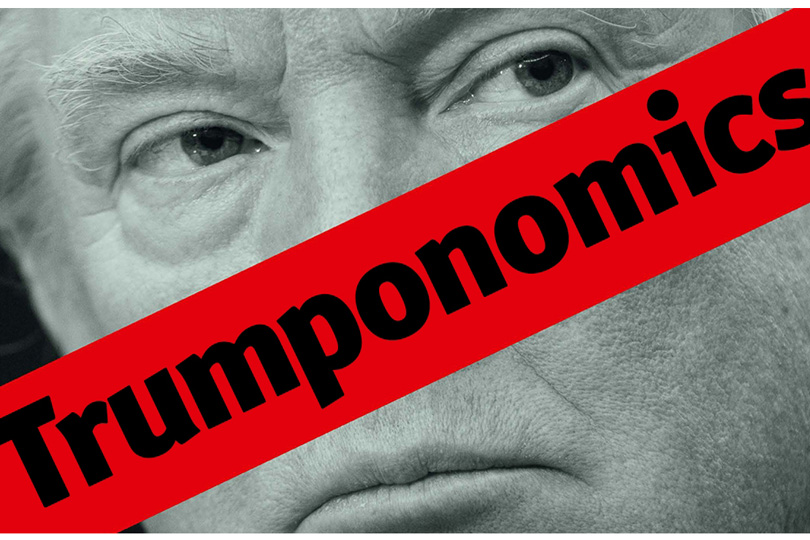Donald Trump rules over Washington as if he were a king and the White House his court. His displays of dominance, his need to be the centre of attention and his impetuousness have a whiff of Henry VIII about them. Fortified by his belief that his extraordinary route to power is proof of the collective mediocrity of Congress, the bureaucracy and the media, he attacks any person and any idea standing in his way.
Just how much trouble that can cause was on sensational display this week, with his sacking of James Comey—only the second director of the FBI to have been kicked out. Mr Comey has made mistakes and Mr Trump was within his rights. But the president has succeeded only in drawing attention to questions about his links to Russia and his contempt for the norms designed to hold would-be kings in check.
Just as dangerous, and no less important to ordinary Americans, however, is Mr Trump’s plan for the economy. It treats orthodoxy, accuracy and consistency as if they were simply to be negotiated away in a series of earth-shattering deals. Although Trumponomics could stoke a mini-boom, it, too, poses dangers to America and the world.
Trumponomics 101
In an interview with this newspaper, the president gave his most extensive description yet of what he wants for the economy (see article). His target is to ensure that more Americans have well-paid jobs by raising the growth rate. His advisers talk of 3% GDP growth—a full percentage point higher than what most economists believe is today’s sustainable pace.
In Mr Trump’s mind the most important path to better jobs and faster growth is through fairer trade deals. Though he claims he is a free-trader, provided the rules are fair, his outlook is squarely that of an economic nationalist. Trade is fair when trade flows are balanced. Firms should be rewarded for investing at home and punished for investing abroad.
The second and third strands of Trumponomics, tax cuts and deregulation, will encourage that domestic investment. Lower taxes and fewer rules will fire up entrepreneurs, leading to faster growth and better jobs. This is standard supply-side economics, but to see Trumponomics as a rehash of Republican orthodoxy is a mistake—and not only because its economic nationalism is a departure for a party that has championed free trade.
The real difference is that Trumponomics (unlike, say, Reaganomics) is not an economic doctrine at all. It is best seen as a set of proposals put together by businessmen courtiers for their king. Mr Trump has listened to scores of executives, but there are barely any economists in the White House. His approach to the economy is born of a mindset where deals have winners and losers and where canny negotiators confound abstract principles. Call it boardroom capitalism.
That Trumponomics is a business wishlist helps explain why critics on the left have laid into its poor distributional consequences, fiscal indiscipline and potential cronyism. And it makes clear why businessmen and investors have been enthusiastic, seeing it as a shot in the arm for those who take risks and seek profits. Stockmarkets are close to record highs and indices of business confidence have soared.
In the short term that confidence could prove self-fulfilling. America can bully Canada and Mexico into renegotiating NAFTA. For all their sermons about fiscal prudence, Republicans in Congress are unlikely to deny Mr Trump a tax cut. Stimulus and rule-slashing may lead to faster growth. And with inflation still quiescent, the Federal Reserve might not choke that growth with sharply higher interest rates.
Unleashing pent-up energy would be welcome, but Mr Trump’s agenda comes with two dangers. The economic assumptions implicit in it are internally inconsistent. And they are based on a picture of America’s economy that is decades out of date.
Contrary to the Trump team’s assertions, there is little evidence that either the global trading system or individual trade deals have been systematically biased against America (see article). Instead, America’s trade deficit—Mr Trump’s main gauge of the unfairness of trade deals—is better understood as the gap between how much Americans save and how much they invest (see article). The fine print of trade deals is all but irrelevant. Textbooks predict that Mr Trump’s plans to boost domestic investment will probably lead to larger trade deficits, as it did in the Reagan boom of the 1980s. If so, Mr Trump will either need to abandon his measure of fair trade or, more damagingly, try to curb deficits by using protectionist tariffs that will hurt growth and sow mistrust around the world.
A deeper problem is that Trumponomics draws on a blinkered view of America’s economy. Mr Trump and his advisers are obsessed with the effect of trade on manufacturing jobs, even though manufacturing employs only 8.5% of America’s workers and accounts for only 12% of GDP. Service industries barely seem to register. This blinds Trumponomics to today’s biggest economic worry: the turbulence being created by new technologies. Yet technology, not trade, is ravaging American retailing, an industry that employs more people than manufacturing (see article). And economic nationalism will speed automation: firms unable to outsource jobs to Mexico will stay competitive by investing in machines at home. Productivity and profits may rise, but this may not help the less-skilled factory workers who Mr Trump claims are his priority.
The bite behind the bark
Trumponomics is a poor recipe for long-term prosperity. America will end up more indebted and more unequal. It will neglect the real issues, such as how to retrain hardworking people whose skills are becoming redundant. Worse, when the contradictions become apparent, Mr Trump’s economic nationalism may become fiercer, leading to backlashes in other countries—further stoking anger in America. Even if it produces a short-lived burst of growth, Trumponomics offers no lasting remedy for America’s economic ills. It may yet pave the way for something worse.







Comments